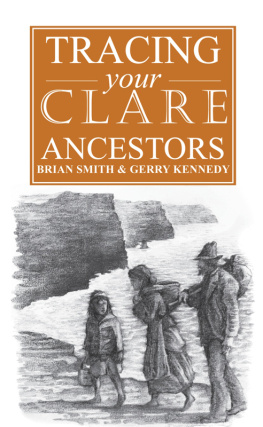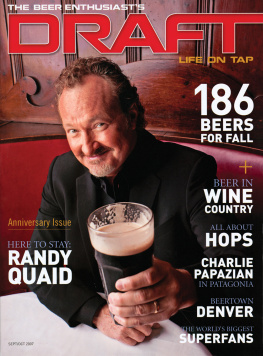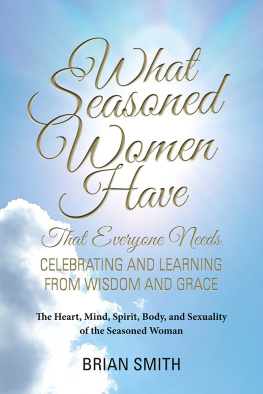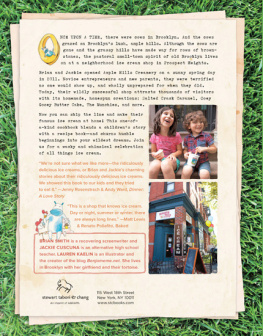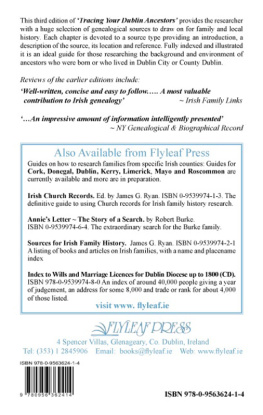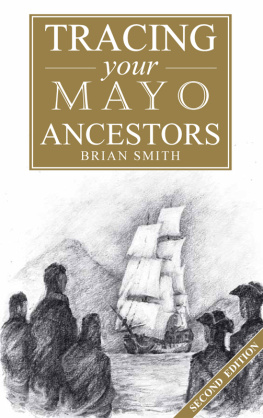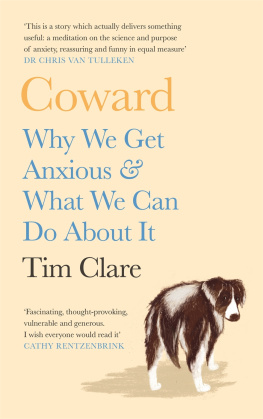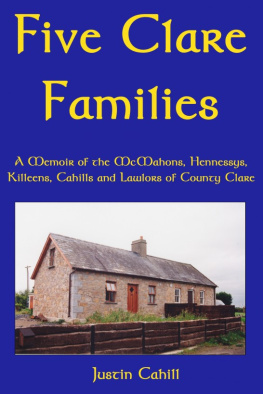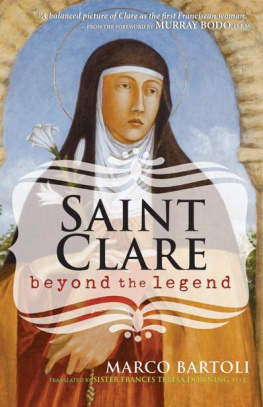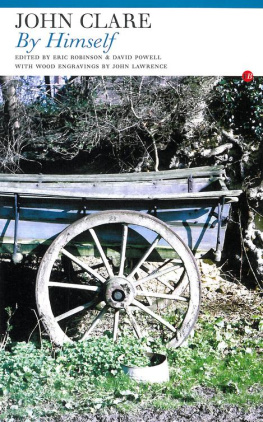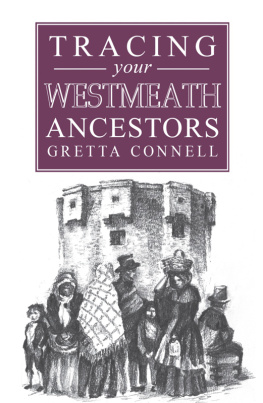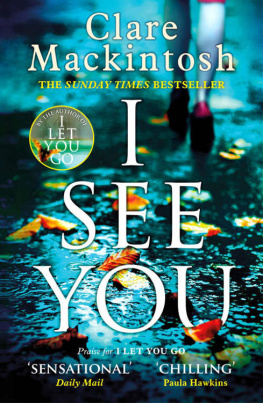A Guide to Tracing Your Clare Ancestors
Brian Smith and Gerry Kennedy

Published in 2013
Flyleaf Press
4 Spencer Villas
Glenageary
Co. Dublin
Ireland
www.flyleaf.ie
2013 Flyleaf Press
British Library cataloguing in Publications Data available
ISBN 978-1-907990-05-2
All rights reserved. No part of this publication may be reproduced, stored in a retrieval system, or transmitted, in any form or by any means, electronic, mechanical photocopying, recording or otherwise without the prior permission of the copyright owner.
The information in this book is subject to change without notice.
Cover Illustration:
Eoin Ryan
www.eoinryanart.com
Layout:
Brian Smith
Contents
Abbreviations Used
| An. Hib. | Analecta Hibernica |
| Arch. | Archaeological |
| b. | birth/born |
| bapt. | Baptism |
| Burl. | Burial |
| BL | British Library |
| BNL | British Newspaper Library Bo. Barony |
| c. | circa |
| Conf. | Confirmation |
| CCL | Clare County Library Co. County |
| CoI | Church of Ireland |
| d. | death/died |
| ed. | editor/edited (by) |
| Gen. | Genealogical |
| GO | Genealogical Office |
| GRO | General Register Office |
| h/c | Hard copy |
| Hist. | Historical |
| IGI | International Genealogical Index |
| IMA Par. Reg. Sect. | Irish Memorials Assoc. Parish Register Section |
| IMC | Irish Manuscripts Commission |
| Ir. | Irish |
| Ir. Anc. | Irish Ancestor |
| Ir. Gen. | Irish Genealogist |
| J. or Jnl. | Journal |
| JAPMD | Journal of Association for the Preservation of Memorials of the Dead |
| LC | Local Custody |
| Lib. | Library |
| m. or marr. | marriage/married |
| m/f. | microfilm |
| Ms/Mss | Manuscript/s |
| NAI | National Archives of Ireland (formerly PRO) |
| n/a | not available/none available |
| n.d. | not dated |
| NMAJ | North Munster Antiquarian Journal |
| NMAS | North Munster Archaeological Society |
| NLI | National Library of Ireland |
| N or Nth. | North |
| OP | Official Papers |
| p./pp. | page/pages |
| Pos. | Positive (microfilm) |
| PRO | Public Record Office (now National Archives of Ireland) |
| PRONI | Public Record Office of Northern Ireland |
| RC | Roman Catholic |
| RCB(L) | Representative Church Body (Library) |
| RIA | Royal Irish Academy |
| RSAI | Royal Society of Antiquarians in Ireland (J. of) |
| SCE | St. Columbas Church of Ireland, Ennis |
| SLC | Family History Library, Salt Lake City (and branches) |
| Soc. | Society |
| SOG | Society of Genealogists (London) |
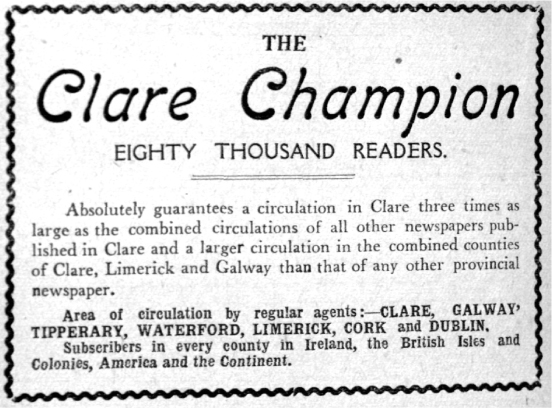

The counties and provinces and of Ireland
Chapter 1
Introduction
County Clare is situated in the north-west of the province of Munster. It is bounded along its coastline by Galway Bay, the Atlantic Ocean and to the east by the river Shannon. The main towns of Clare are Ennis, Kilkee, Killaloe, Kilrush, Scariff, Sixmilebridge, Shannon and Tulla.
In the old Gaelic system, the county was part of the Kingdom of Thomond. The main Gaelic families are the OBriens, OLoughlins, McNamaras and McMahons, generally referred to as the Dalcassian families.
Clare was invaded on several occasions from the ninth century by Danish Vikings who established settlements on Inniscattery Island and elsewhere. They were finally being defeated by Brian Boru, who also defeated the Danes at the Battle of Clontarf in 1014.
Following the Norman invasion of 1169, the area was nominally granted to Norman knights. However the Clare chieftains kept them from holding any substantial power in the county. The major Norman settlements were at Clare town and Bunratty. Some were eventually expelled from the county by the Gaelic families while others adopted the Irish way of life.
The county boundary was established in 1565 by the English authorities, who first united it with the province of Connaught. However in 1602 it became part of Munster.
Following the Irish Rebellion of 1641, Clare was one of the counties which was set aside to accommodate the delinquent proprietors i.e., those proprietors whose land was confiscated because they did not actively oppose the rebellion. Under the 1652 Act of Settlement parts of the holdings of the existing Clare landholders were confiscated to accommodate these delinquent proprietors and supporters of Cromwell were also planted in the county.
Although unaffected by the 1798 rebellion it was troubled by agrarian disturbances during the 1800s. The county was badly affected by the Great Famine of 1845-50 and by 1851 the population had decreased considerably. Over 50,000 people died and thousands emigrated to many destinations throughout the world. The continuing decline in population continued on into the early years of the twentieth century, by 1901 the population was 112,334 and by 1911 it was down to 104,232.
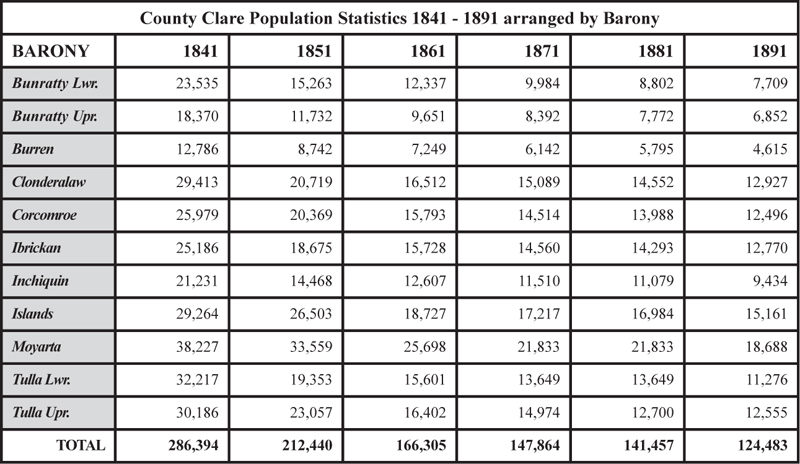
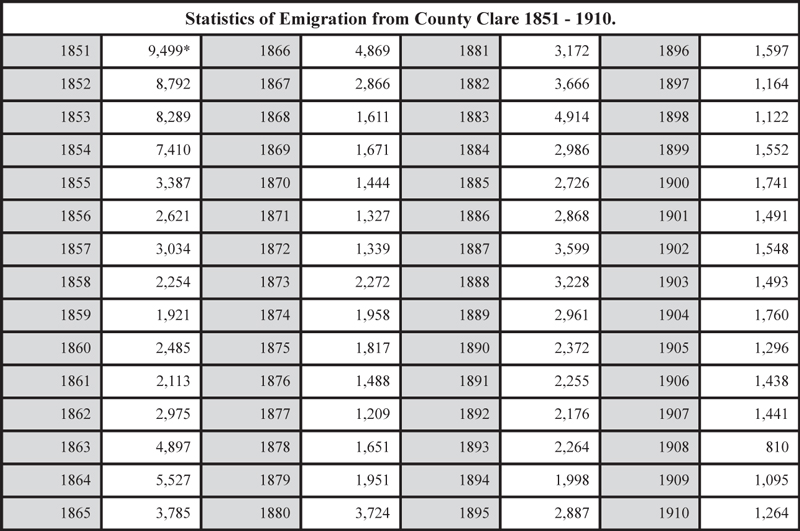
* from the 1st May 1851
Chapter 2
Getting Started
Tracing a family history normally requires the researcher to consult many different historical sources. Hopefully, some or all will provide details of the family being researched. Sufficient details, when pieced together, can form a comprehensive picture of a familys existence. The final picture depends on number and quality of the sources.
It is important that the full range of sources available are used effectively. These sources vary widely in their genealogical content and are described as Primary Sources (e.g. Civil registration of births, marriages and deaths; church records; census records; Wills and administrations) and Secondary Sources (i.e. records that assist the researcher to locate an ancestors existence in an area at a particular time, e.g. Tithe Applotments, Griffiths Valuations). Some of the above sources will also provide the researcher with interesting background details.
Other sources can also be of great assistance in providing information about the lifestyle of an ancestor. They can, in some cases, be used to define a timeframe in which a primary source can be consulted. They include newspapers, journals, published family histories and documents.

